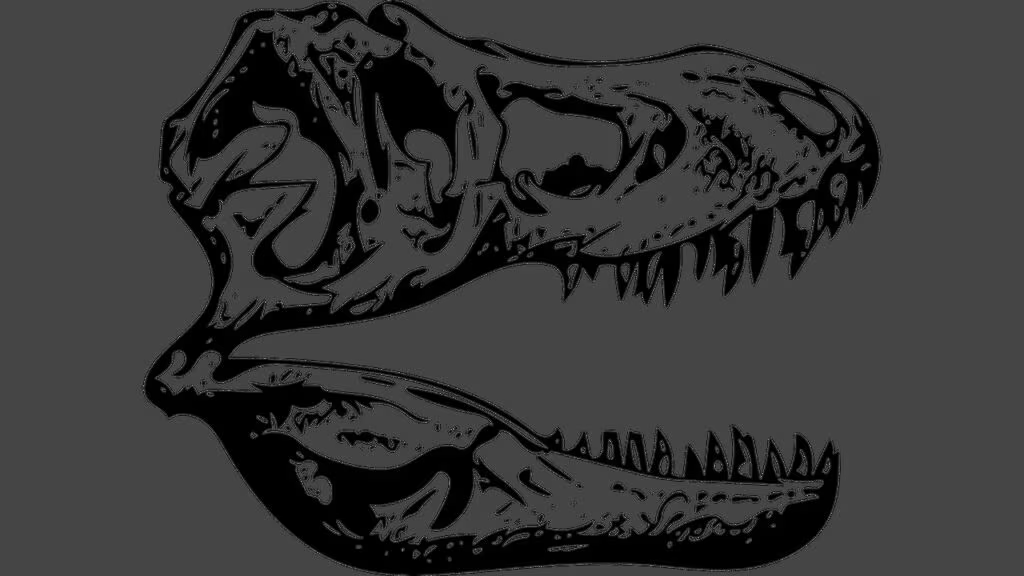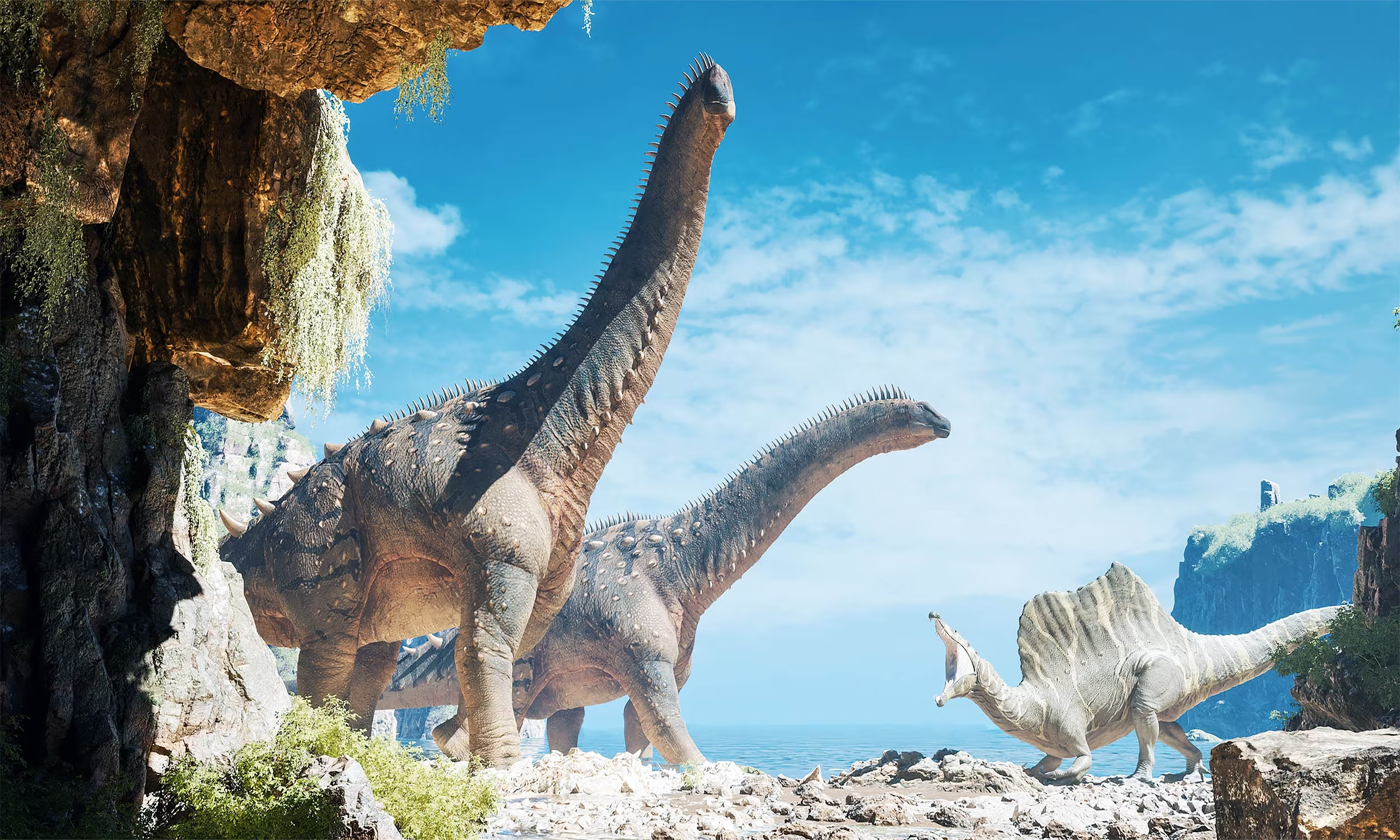Paleontological Breakthrough: Unearthing a 100-Foot Giant in Argentina

Scientists working in the vast, fossil-rich landscape of Patagonia, Argentina, have formally described a new species of colossal long-necked dinosaur, a titanosaur named Chucarosaurus diripienda. Estimated to have stretched approximately 100 feet (30 meters) from head to tail, this giant roamed the Earth during the Late Cretaceous period, roughly 90 million years ago.
While the sheer size of the discovery is significant, the find gained notoriety for a unique logistical challenge: the massive fossil block containing the remains was so large and heavy that it reportedly damaged the road during its transport from the remote excavation site to the laboratory. This unusual incident is even reflected in the dinosaur’s scientific name.
This discovery reinforces Patagonia’s status as a global hotspot for the largest sauropods ever known, providing crucial new data on the diversity and gigantism achieved by these herbivorous giants.
The Discovery of a New Titanosaur Lineage
The remains of Chucarosaurus diripienda were unearthed in the Candeleros Formation in the Río Negro Province of Argentina. The research, led by Federico L. Agnolín from the Argentine Museum of Natural Sciences (MACN), was published in the journal Cretaceous Research.
Titanosaurs represent the most diverse and successful group of long-necked sauropods, characterized by their immense size and wide distribution across the globe during the Cretaceous period. Chucarosaurus is classified within this group, but its specific anatomical features suggest it belongs to a distinct lineage, offering new insights into titanosaur evolution.
Key Fossil Evidence
The paleontologists recovered several critical skeletal elements that allowed them to accurately estimate the dinosaur’s massive dimensions. These included:
- Parts of the hip: Crucial for understanding the weight-bearing structure.
- Leg bones: Specifically, fragments of the femur (thigh bone), humerus (upper arm bone), and ischium (lower hip bone).
These bones, though fragmentary, were robust and large enough to confirm the animal’s status as one of the largest known terrestrial vertebrates. The analysis of the limb bones suggests that Chucarosaurus possessed a relatively slender and elongated build compared to some of its bulkier titanosaur relatives.

Etymology: The Dinosaur That Lived Up to Its Name
The scientific name, Chucarosaurus diripienda, is highly descriptive and directly references both the animal’s nature and the circumstances of its discovery and transport.
- Chucarosaurus: Derived from the local Quechua language, where “Chucaro” means “hard and untamable animal.” This reflects the powerful, formidable nature of the giant sauropod.
- diripienda: A Latin term meaning “scrambled” or “broken apart.” This term was chosen specifically to commemorate the incident where the immense weight of the fossil block, encased in plaster and rock for protection, caused damage to the rural road during its journey to the museum.
This naming convention provides a rare, humorous, and highly specific piece of context, solidifying the dinosaur’s place in paleontological lore.
Patagonia: The Cradle of Giants
The discovery of Chucarosaurus is the latest in a long line of world-record-breaking sauropod finds in Patagonia. The geological conditions and the specific timing of the Cretaceous period in this region fostered the evolution of truly gigantic herbivores.
Patagonia is home to several of the largest dinosaurs ever described, including:
- Argentinosaurus: One of the most famous and largest titanosaurs, potentially exceeding 110 feet in length.
- Patagotitan mayorum: Another contender for the title of the largest dinosaur, estimated to weigh up to 70 tons.
The Candeleros Formation, where Chucarosaurus was found, is particularly significant because it dates to the Cenomanian stage of the Late Cretaceous, a period known for high species diversity and the emergence of these hyper-gigantic forms. The presence of Chucarosaurus alongside other known giants suggests that the Patagonian ecosystem of 90 million years ago was capable of sustaining multiple species of enormous herbivores simultaneously, likely due to abundant vegetation and favorable climatic conditions.
The Significance of the Find
For paleontologists, Chucarosaurus helps fill gaps in the evolutionary tree of titanosaurs. The distinct morphology of its limb bones indicates that not all gigantic titanosaurs followed the same evolutionary path toward maximum bulk. Instead, there appears to have been a diversity of body plans, even among the largest members of the group.
“The discovery of a new titanosaur of this magnitude in the Candeleros Formation is extremely important,” noted the researchers. “It helps us understand the complex ecological relationships and the sheer scale of life that existed in this region during the Cretaceous.”
Key Takeaways: Chucarosaurus diripienda
This landmark discovery provides both scientific insight into sauropod evolution and a memorable anecdote about the challenges of excavating truly colossal fossils.
- Species Name: Chucarosaurus diripienda, meaning “untamable, broken-apart reptile.”
- Classification: Titanosaur (a type of sauropod).
- Size Estimate: Approximately 100 feet (30 meters) long.
- Time Period: Late Cretaceous period, around 90 million years ago.
- Location: Candeleros Formation, Río Negro Province, Patagonia, Argentina.
- Defining Incident: The fossil block was so heavy it damaged the road during transport, leading to the second part of its scientific name.
- Scientific Value: The remains suggest a more slender build than some other Patagonian giants, indicating diverse evolutionary paths within the titanosaur group.
Conclusion: Continuing the Search for Giants
The description of Chucarosaurus diripienda is a testament to the ongoing importance of fieldwork in Patagonia. While the logistical challenge of transporting the massive, fragile remains was significant—culminating in the now-famous road incident—the scientific reward is immense. Every new species of titanosaur, particularly those of this scale, helps researchers piece together the puzzle of how life could evolve to such extreme sizes, offering a clearer picture of the planet’s dominant life forms during the Age of Dinosaurs. Further analysis of the recovered fragments will continue to refine our understanding of this magnificent, untamable giant.
Originally published: October 29, 2025
Editorial note: Our team reviewed and enhanced this coverage with AI-assisted tools and human editing to add helpful context while preserving verified facts and quotations from the original source.
We encourage you to consult the publisher above for the complete report and to reach out if you spot inaccuracies or compliance concerns.

